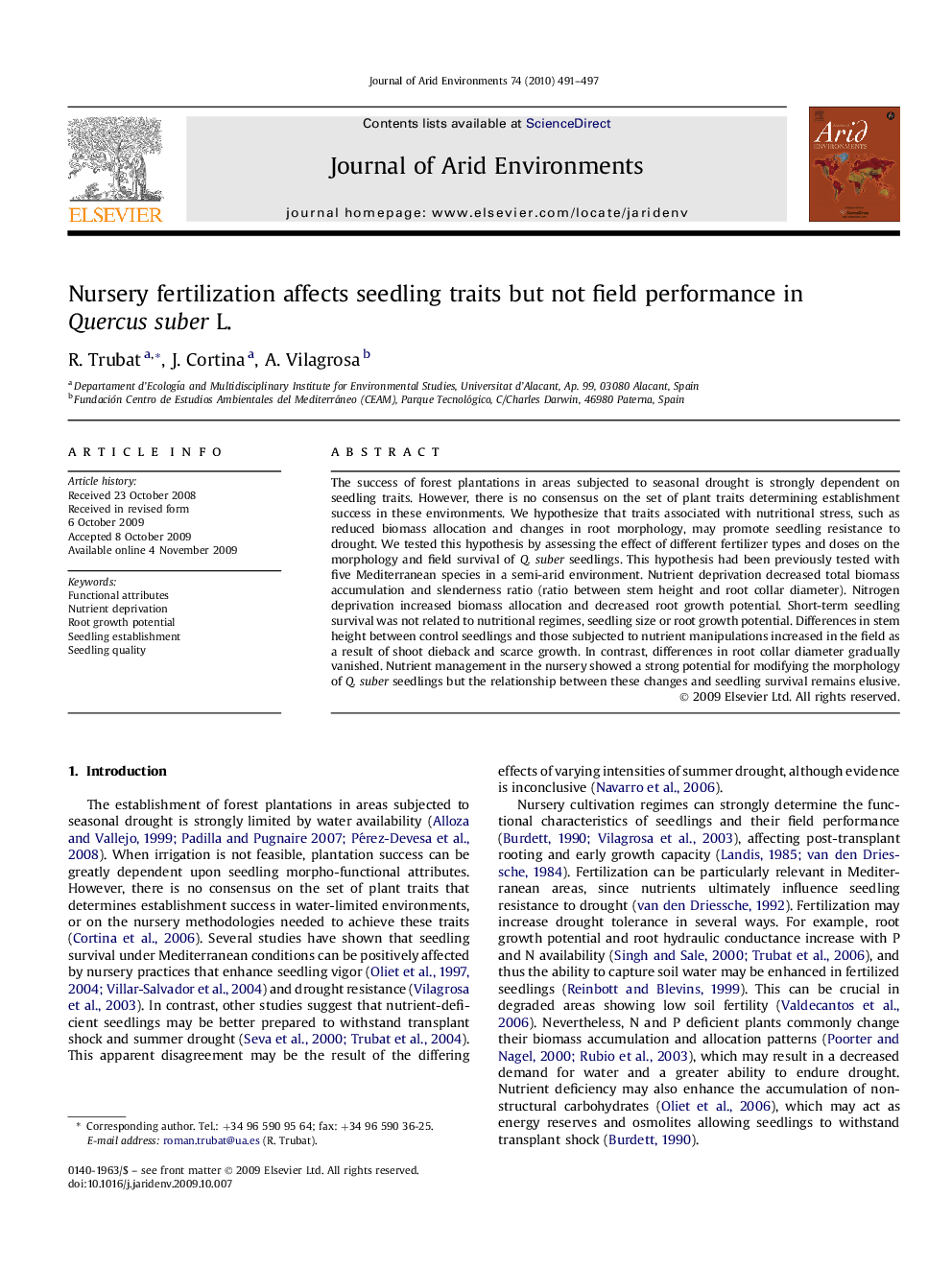| Article ID | Journal | Published Year | Pages | File Type |
|---|---|---|---|---|
| 4394291 | Journal of Arid Environments | 2010 | 7 Pages |
The success of forest plantations in areas subjected to seasonal drought is strongly dependent on seedling traits. However, there is no consensus on the set of plant traits determining establishment success in these environments. We hypothesize that traits associated with nutritional stress, such as reduced biomass allocation and changes in root morphology, may promote seedling resistance to drought. We tested this hypothesis by assessing the effect of different fertilizer types and doses on the morphology and field survival of Q. suber seedlings. This hypothesis had been previously tested with five Mediterranean species in a semi-arid environment. Nutrient deprivation decreased total biomass accumulation and slenderness ratio (ratio between stem height and root collar diameter). Nitrogen deprivation increased biomass allocation and decreased root growth potential. Short-term seedling survival was not related to nutritional regimes, seedling size or root growth potential. Differences in stem height between control seedlings and those subjected to nutrient manipulations increased in the field as a result of shoot dieback and scarce growth. In contrast, differences in root collar diameter gradually vanished. Nutrient management in the nursery showed a strong potential for modifying the morphology of Q. suber seedlings but the relationship between these changes and seedling survival remains elusive.
